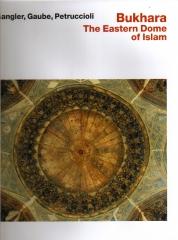Bukhara is one of the architectural miracles of the East. A Persian author of the Middle Ages called Bukhara the »Eastern Dome ofIslam«. This honorary title was given to the city on account of its prestige as one of the most famous centers of learning in the Islamic world. Many outstanding scholars, among them the great philosopher and medic Avicenna (Ibn Sina), came from Bukhara. Therefore it is not surprising that the name of the city itself is traditionally derived from the Indian Buddhist term »vihara« (place of learning). Bukhara, located in the fertile valley of the Zarafshan river is the third-largest city of the Republic of Uzbekistan. It was founded some decades after Alexander the Great's campaigns to the east. In the pre-Islamic period (before 700 AD) it was one of the cities of the Sogdian confederation and had grown to a considerable size. In the 10th century the Persian dynasty of the Samanids made Bukhara to one of the richest cities of the Islamic world and to the meeting point of the most famous scholars of the time. After the fall of the Samanids Bukhara declined steadily. It took about 500 years until the city became a political and intellectual center again. After 1500 the Uzbek Khans controlled from Bukhara the most powerful state of Central Asia. Under the Uzbeks Bukhara was rebuilt and embellished with buildings. The high rising domes and façades of these buildings decorated with glazed tiles characterize the city's appearance up to the day. Under Uzbek rule the city also became a famous center of learning again. In 1868 the Khanate of Bukhara and its capital were conquered by the Russians. 1920 Soviet rule started, and since 1991 the city is one of the historical treasures of the independent Republic of Uzbekistan.
In this book a city planner, an architect and a historian trace the urban development of this outstanding city and analyze its architecture in urban and historical contexts from its origins in the pre Islamic period to the situation today. The authors did extensive fieldwork in Bukhara and have published a number of books and many articles on Near Eastern and Persian architecture and urbanism.
Anette Gangler teaches city planning at the University of Stuttgart. Heinz Gaube is professor of Oriental studies at the University of Tübingen. Attilio Petruccioli was Aga Khan Professor of Islamic Architecture at the Massachusetts Institute of Technology from 1994 to 1998; today he teaches at the Politecnico de Bari.

(0 Comentarios)